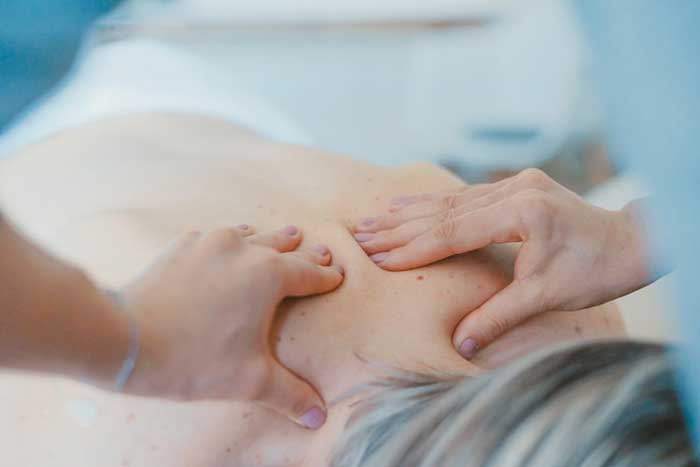How to monitor the condition and health of your back, even if you missed this moment in your youth?
How to manage your posture at 20
At this age, our body is full of health and irrepressible energy. Metabolism works like a clock, stormy youth promotes regular physical activity, and the body copes with injuries on its own. The strength of the spine at a young age makes it easy to survive any drama: a fall on the tailbone, a compression fracture after snowboarding, an inept deadlift try or jumping on a trampoline.
However, it is worth remembering that damage can remind of itself in the future. If you don’t want to start using heating patches by the age of thirty, don’t let your violent head find traumatic adventures. Engage in physical activity 10 hours a week – it increases the density of bones, ligaments, and helps to gain muscle mass. Be sure to include 2 strength training sessions per week.
Be sure to monitor your posture: a monitor at the eye level, a vertical mouse, a chair on wheels and with comfortable armrests. If flat feet are detected at this age, start using corrective insoles to prevent secondary changes in the foot.
How to take care of your back at 30
Those who neglected physical activity in their early youth and spent most of it sitting on a chair without movement can expect the initial signs of osteochondrosis: the first lumbago in the neck, tightness of the thoracic spine, someone will even have the first hernia. These problems arise due to the gradual decrease in the height of the discs and their loss of moisture.
It is important to start physical activity of medium intensity and maximum duration. For example, it can be brisk walking from 6,000 steps plus circular strength exercises twice a week. During this period, you can add water procedures: visiting the pool or hydromassage. Preventive massage will help with 10-day courses or in a supportive mode – once a week.
By the way, to have a beautiful posture means hard work, which is not always possible even for the stars. Many celebrities slouch their backs.
At the age of thirty, it is important to start working on the mobility of the thoracic spine – it becomes more rounded, and a stoop may appear, like in older people. Do additional chest and shoulder exercises. Rounding the thoracic spine will lead to a change in overall posture and put additional stress on the lower back and neck.
How to keep track of your back health at 40
At forty, the body begins to show the first signs of age-related changes in the joints of the spine. This is where we notice all the injuries of the past: falls, fractures, lifting weights. If you neglected your back health before the age of 40, you will be immediately reminded of this at the doctor’s office: MRI will show muscle thinning, the first signs of atrophy (dystrophy) and a decrease in the tone of the very muscles that make the spine stable. It is at this age, unfortunately, that hernias and protrusions flourish.
At this age, it is recommended not to give up exercise, to exercise regularly and correctly. For example, yoga with a set of exercises for the back. It’s important to find a balance between strength and stretching exercises. Experts also recommend gymnastics for the spine and physiotherapy exercises. In addition to the above, exercises to increase blood circulation throughout the body and to strengthen the muscles of the back will be useful.
How to help your back at 50
Those who used to excessively load the spine with weights in their youth acquire the changes characteristic of a later age already at the age of 50. Those who tried to strengthen the back muscles, exercised regularly and remembered the fragility of the spine will have it in good condition.
The most important factor at 50 is menopause. It must be remembered that osteoporosis and other diseases leading to serious changes in the body come unnoticed: calcium is washed out of the bone tissue, posture worsens, and most importantly, not only bones, but also the skin change. At this age, the control of a gynecologist and endocrinologist is simply necessary.
It is very important to continue to be physically active, but reduce the intensity a little. It is important not to forget about regular exercises to strengthen certain muscle groups and ligaments.









